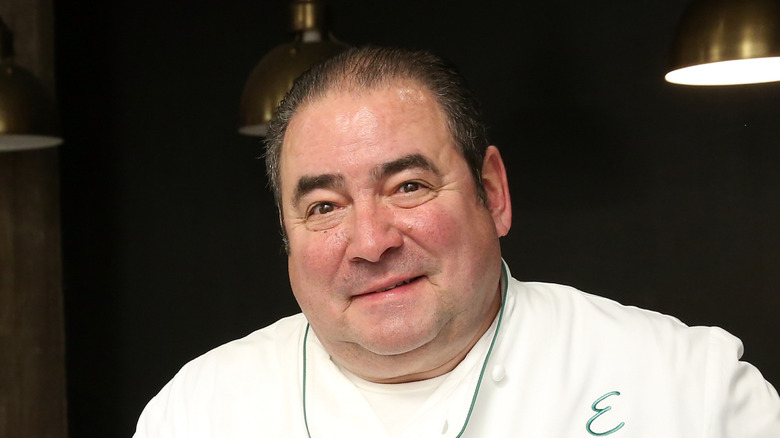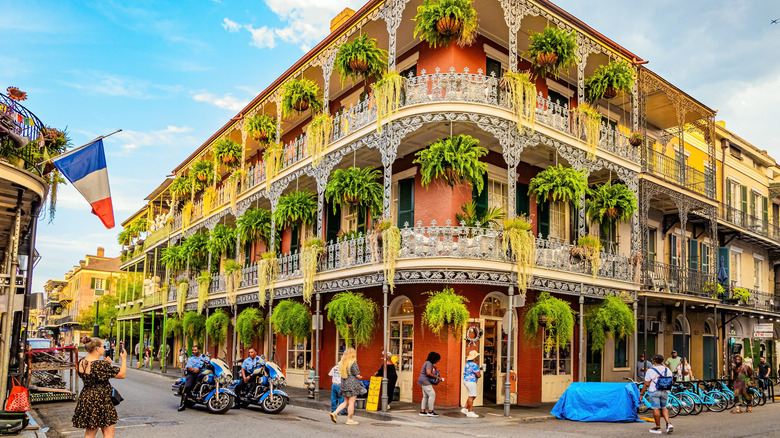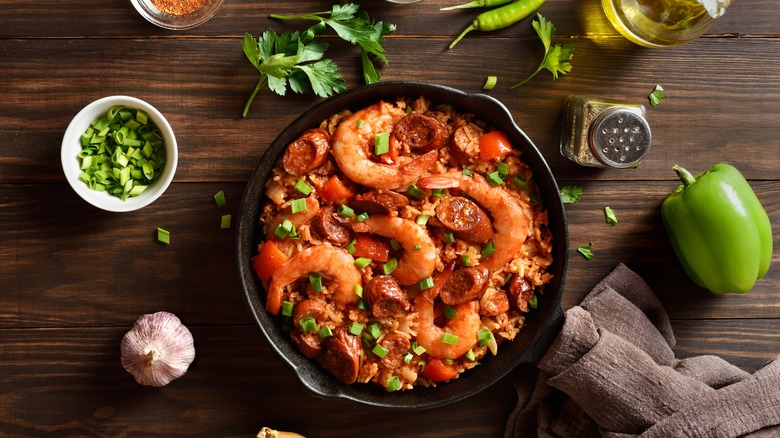Chef Emeril Lagasse's Favorite American Food City Is Steeped In Tradition
Contrary to popular belief, Emeril Lagasse did not grow up in New Orleans, Louisiana. The Massachusetts native learned the culinary arts at Johnson & Wales in Rhode Island before honing his skills abroad in France. While he initially began his cooking career in the northeastern U.S., he moved south to The Big Easy for a position at The Commander's Palace, a restaurant that has been in operation since 1880. Lagasse ran the kitchen for eight years before opening Emeril's, his flagship restaurant. Since then, the chef has become synonymous with New Orleans, one of the most culturally diverse epicurean cities in the world. Not at all surprisingly, it remains his favorite food city.
He explained to "Travel + Leisure," "I think what makes it so special is there's so much tradition for so many years. You have this strong heritage of Spanish, French, African, and a little bit of Italian, but now the evolution of what's happening in New Orleans is you have food from Vietnam to Senegal. The food scene has changed dramatically."
Indeed, it has. From the city's origins, the food of New Orleans has consistently morphed, beautifully weaving together cultures and ingredients that are merged from several nations. Despite the fusion, dishes from this bustling, exciting town on the coast of Louisiana are collectively known as pure New Orleans cuisine.
From Native American to Creole cuisine
In the late 17th to early 18th centuries, some of the first foreigners to come into contact with the Native Americans in the New Orleans area were French explorers, some of which traveled from Canada down the Mississippi River to what would later become known as Crescent City. Through bartering and trading, the natives introduced the French to local ingredients, which the French incorporated into their cooking methods and dishes. Today, French influence in the bustling city remains strong and apparent in the architecture, language, culture, and, of course, cuisine.
Shortly thereafter, a large influx of German immigrants arrived, who largely introduced the area to rice crops (think Jambalaya) and sausages. Andouille sausage, which is a prominent ingredient in New Orleans food, is just one result of German influence. Around this same time, the first slaves from Africa arrived in the port city. Many became cooks for French colonists and would ultimately be responsible for leaving one of the most lasting and profound influences on New Orleans cooking. African culinary impact includes gumbo, which originated in West Africa, and the heavy use of okra.
In the middle of the 18th century, Spain took ownership of Louisiana, which had been under French rule. Not only did Spanish flavors begin to impact the local cuisine, but those of the Caribbean did as well, as these islands were under Spain's jurisdiction at the time. It was during this era that "Creole" cuisine was born, dishes that were derived from French, Spanish, German, or African origin.
Cajun cuisine to the modern era
By 1755, a heavy influx of exiled individuals known as Acadians arrived in New Orleans. Nicknamed "Cajuns," they were French hunter-gatherers who were forced out of Canada by Britain and given land grants near the swamps and bayous of Louisiana. These new arrivals ultimately left their impact on New Orleans largely in the form of wild game (like alligator), seafood (such as crawfish), and bold, rustic flavors, which is collectively known as Cajun cuisine.
Moving into the 19th century, immigrants continued to arrive in New Orleans, including large numbers of Italians and Sicilians who opened lots of grocery stores and produce stands. If you've ever eaten a muffuletta sandwich or a stuffed artichoke in New Orleans, you've enjoyed two locally famous dishes that were created by Italian immigrants. By the 20th century, the Big Easy was well established as a vital port, commerce, history, and food city. But it continues to grow and evolve. A large number of Vietnamese immigrants arrived in the 1970s, fleeing from the Vietnam War, bringing with them dishes like pho and Bahn mi sandwiches. After Hurricane Katrina, waves of South and Central American migrants came to help rebuild the city, adding to the diverse food culture with things like arepas and ceviches (a perfect summertime lunch), which utilize the bounty from the sea.
It's no wonder that Emeril Lagasse favors the food in New Orleans above all other cities. While other bustling metropolises like New York, Los Angeles, and San Francisco certainly offer countless diverse eateries, New Orleans has taken elements from its colorful history and crafted them into its own delicious, signature style, making it the ultimate melting pot of food.


